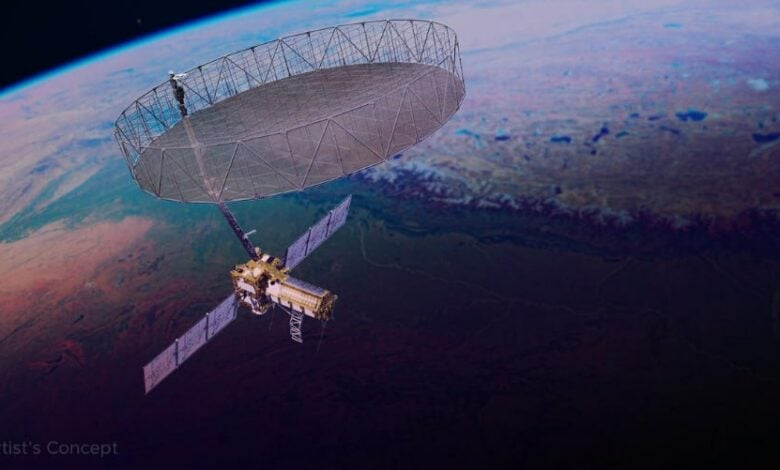NASA and ISRO’s Record-Breaking Radar Antenna Unfurled in Orbit

NASA and ISRO’s Record-Breaking Radar Antenna Unfurled in Orbit
—————————–
NASA has successfully deployed the record-breaking radar antenna for its NISAR (NASA-ISRO Synthetic Aperture Radar) satellite, a joint Earth science project with the Indian Space Research Organisation (ISRO), SciTech Daily reported. The satellite’s main component, a 39-foot-wide radar antenna reflector, was unfurled on August 15, 2025, in low Earth orbit.
The satellite, which was launched on July 30, uses a process called “bloom” to unfurl the reflector, which was folded like an umbrella. The antenna will direct microwave pulses to Earth to collect data about the planet’s changing surface. This is the first satellite mission to use a dual-radar system, consisting of both an L-band system that can penetrate clouds and dense forests and an S-band system that is sensitive to lighter vegetation and snow moisture.
The information gathered by NISAR will be used to monitor various Earth processes, including shifting ice sheets and glaciers, land deformation from natural disasters, and changes in forests and wetlands. This data is expected to be vital for disaster response, infrastructure management, and agriculture. The spacecraft was built by ISRO, which also provided the S-band radar, while NASA’s Jet Propulsion Laboratory (JPL) contributed the L-band radar and other components.






